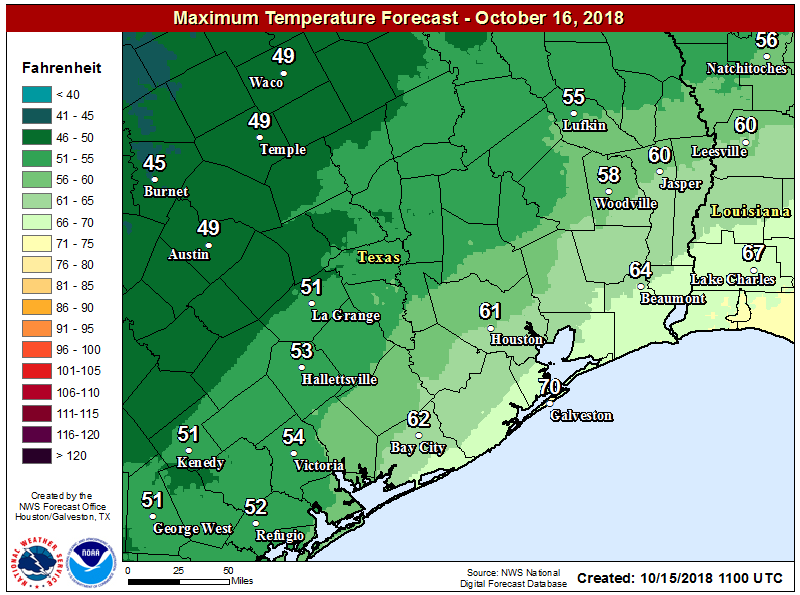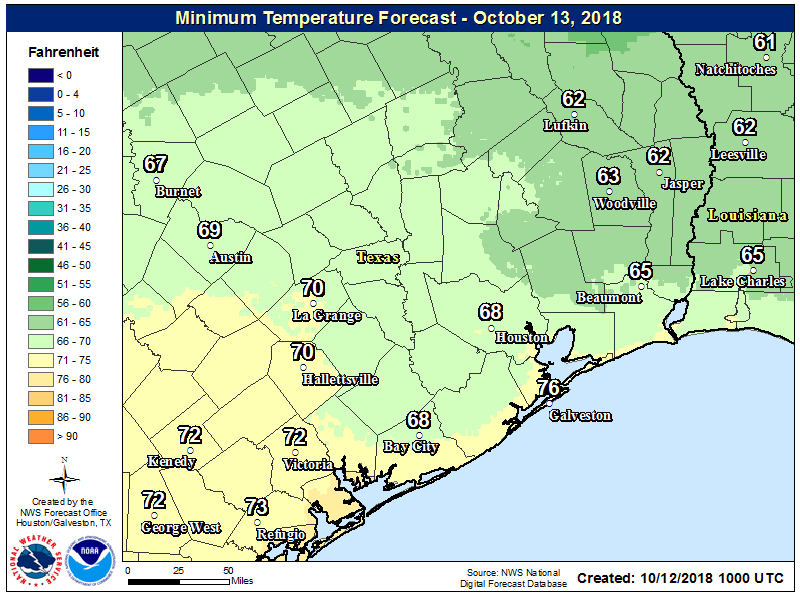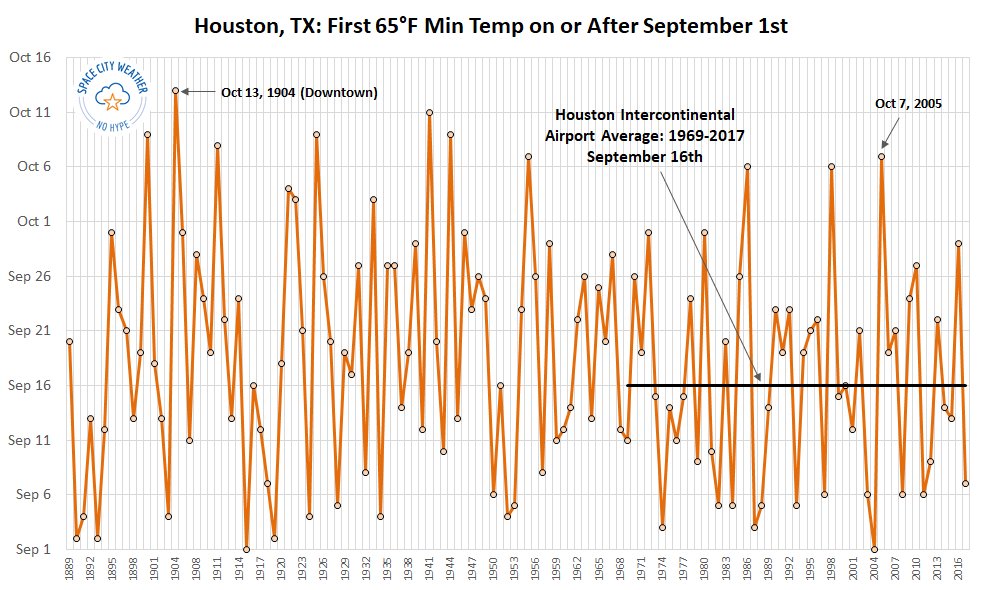Temperatures are generally 20 to 25 degrees cooler this morning across the Houston metro area, with lows in the upper 40s for far inland areas near College Station, in the 50s for most of Houston itself, and the lower 60s along the coast.

After the influx of colder air, what you see with our weather now is basically going to be what you get. We’re probably stuck with mostly to completely cloudy skies for the rest of this week, and we may see some periodic stormy activity like we saw on Monday.
Tuesday
This will be the region’s coldest day in at least six months, with cloudy skies and high temperatures generally in the low 60s for Houston, and 50s for some inland counties well away from the coast. Rain chances will not be too high today, I’d peg them at around 30 percent, with heavier showers likely remaining well to the north of the area, or offshore. All in all, this will be a rather dreary day. (Until the Astros win this evening, of course).
Wednesday and Thursday
Not much changes for the middle part of this week, with a cooler air mass near the surface, and warmer above, allowing for a thick cloud deck and continued moderate rain chances. All told, I’d expect most of the area to pick up about one-half inch—totals will be highly dependent upon very localized storms—of rain over the next three days. High temperatures will warm into the upper 60s and low 70s for the region.



